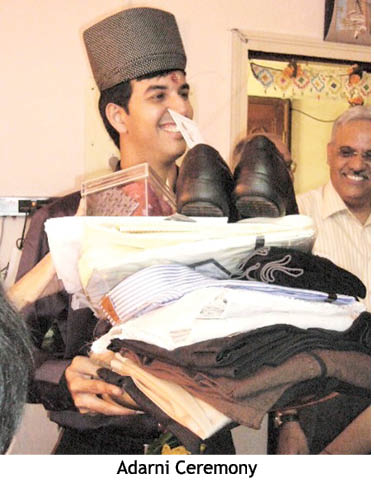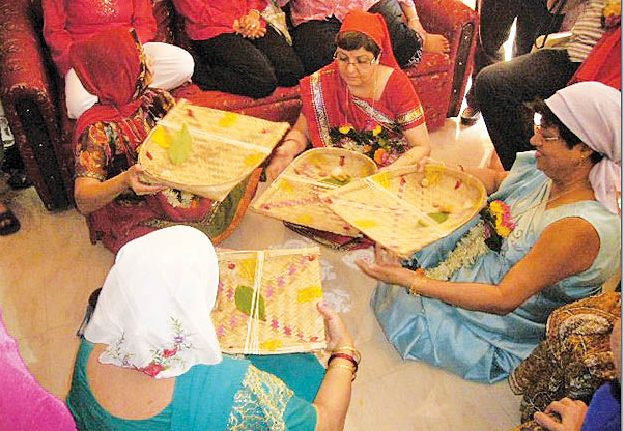A marriage or lagan, as we say in Parsi, is a once-in-a-lifetime experience for all those who decide to take the plunge and tie the knot. A Parsi lagan is an elegant, elaborate and fun affair – it is more than just  a religious ceremony that binds two people together in holy matrimony – it’s about families coming together, it’s about butterflies in the stomach, it’s about food and excitement, and importantly, it’s about what makes a lagan ever more memorable – the numerous, fun yet meaningful and symbolic rituals attached to every lagan which enhance and cement the essence and beauty of a marriage.
a religious ceremony that binds two people together in holy matrimony – it’s about families coming together, it’s about butterflies in the stomach, it’s about food and excitement, and importantly, it’s about what makes a lagan ever more memorable – the numerous, fun yet meaningful and symbolic rituals attached to every lagan which enhance and cement the essence and beauty of a marriage.
Our Parsi wedding customs take place on three levels – before, during and after the lagan.
Rituals Before The Lagan:
The ‘Rupia Peravanu’ Ritual: It all starts here! In short, you’re booking your  to-be-spouse, it’s like a sweet announcement celebrating the fact that this Bawi/Bawa is off the market! ‘Rupia Peravanu’ is the formal approval from the families from either side – the precursor to an engagement. This ceremony can be performed way before the lagan, or just a few days leading to the lagan. On this occasion an auspicious five, seven or nine members from the to-be-groom’s family go over to the to-be-bride’s home (traditionally, or it could be held on a more ostentatious level by hiring a hall outside). The samdhan or mother of the to-be-bride welcomes them at the door and gifts the members of the groom’s family auspicious gifts including silver coins, nariyal, coconuts and sweets. Both families sit together over refreshments, and after the groom’s entourage leaves, the bride’s entourage repeats the same – headed for the groom’s place, where the same formality is joyfully reciprocated.
to-be-spouse, it’s like a sweet announcement celebrating the fact that this Bawi/Bawa is off the market! ‘Rupia Peravanu’ is the formal approval from the families from either side – the precursor to an engagement. This ceremony can be performed way before the lagan, or just a few days leading to the lagan. On this occasion an auspicious five, seven or nine members from the to-be-groom’s family go over to the to-be-bride’s home (traditionally, or it could be held on a more ostentatious level by hiring a hall outside). The samdhan or mother of the to-be-bride welcomes them at the door and gifts the members of the groom’s family auspicious gifts including silver coins, nariyal, coconuts and sweets. Both families sit together over refreshments, and after the groom’s entourage leaves, the bride’s entourage repeats the same – headed for the groom’s place, where the same formality is joyfully reciprocated.
The Madhavsaro or Mado Saro Ritual: This is known as the tree-planting  ceremony and is held with great pomp exactly four days before the lagan. Both families, dressed preferably in red clothes, plant a young mango tree sapling in their homes – this ritual symbolizes fertility and abundance and is performed to bless an early parenthood to the to-be bride and groom. The soil in the pot comprises a combination of betel nuts, dry dates, turmeric and three metals. In non-tropical climates, saplings of trees known to bear abundant fruit are planted instead. A priest presides over this ceremony and then the pot is placed at the entrance of the homes of both families. For eight days, the plant is watered daily in the mornings. Post the wedding it is replanted at another place.
ceremony and is held with great pomp exactly four days before the lagan. Both families, dressed preferably in red clothes, plant a young mango tree sapling in their homes – this ritual symbolizes fertility and abundance and is performed to bless an early parenthood to the to-be bride and groom. The soil in the pot comprises a combination of betel nuts, dry dates, turmeric and three metals. In non-tropical climates, saplings of trees known to bear abundant fruit are planted instead. A priest presides over this ceremony and then the pot is placed at the entrance of the homes of both families. For eight days, the plant is watered daily in the mornings. Post the wedding it is replanted at another place.
Sagan or Adravanu: ‘Adra’ meaning fire, marks the occasion with lighting of divas. earthen lamps or diyas. Sagan is the formal engagement which takes place at the bride’s home, where the groom’s side presents the bride with new clothes, jewelry and other accessories, compulsorily including red coloured bangles. Bawi brides dress up resplendently in a red sari on their sagans.
Adarni: is the bridal shower, where the groom’s family visits the bride and gifts her additional jewelry, clothes, accessories et al, and the same is reciprocated by the bride’s side. The ceremony is attended by close relatives, families and friends and the menu for an Adarni must compulsorily include sev-dahi, bananas and boiled eggs.
Supra Ni Reet or Supra Nu Murat: In this ceremony, five married women apply harad (turmeric) paste to the bride-to-be and the groom-to-be. According to the tradition, four married women are given a piece of coconut, beetel nut, dates and leaves which are put in a supra. Songs are sung and supras are exchanged. The fifth woman sits in the centre with a khalbatto and dry harad. After exchanging the supras, the married women collectively grind the harad with milk to form a paste which is applied to the bride and the groom.
Nahan: Meaning ‘holy bath’, this ritual takes place immediately prior to the wedding. Nahan symbolizes the purification of the to-be-couple’s body and soul, as they are bathed amidst recital of prayers and made to sip taro (holy urine of Varasiaji) and eat pomegranate leaves. The bride dresses in her bridal sari gifted by her future in-laws and the groom sports the flambouyant dagli and pheta… and they head for the lagan ceremony.
Rituals During The Lagan:
Lagans usually take place after sunset or very early mornings, as these are considered most auspicious timings, though most Parsi Lagans take place at 6:40 pm. The wedding venue – usually baugs – are decorated with flowers with the stairways and doorways donning elaborate rangolis.
Acchu Michu: A stage is set at the baug or fire temple where the wedding takes place. For performing Acchu Michu, the bride’s mother gets a tray filled with coconut, rice, water, beetel nut, kharek and dates and circles it around the groom seven times, except for the water which is thrown on the side before the groom sets foot on stage. The same is followed by the groom’s side for the bride.
Ara Antar: In this fun ritual, the bride and the groom are made to sit facing each other with a large white cloth-screen, held by family members, preventing them from seeing each other. Both are given a handful of rice to hold. The family priest circles the couple seven times with a thread while praying, and the moment the seventh circle is completed, the couple is supposed to shower the rice on each other. It is said that the one who throws the rice first, rules over the relationship post marriage!
Chero Bandhvanu: The couple is made to sit next to each other with the seven strands of thread tying them. The witnesses and the priest are made to sit beside them. Divas are placed on the tables and the priest starts the prayers. After about an hour, the couple exchanges rings and the priest blesses the union of the bairi and var amid a shower of flowers from the bystanding relatives.
Haath Borvanu: A fun lagan ritual, haath borvanu have the bride’s sisters asking the groom to put his hand in a glass of water and he is made to sit that way until he gives money to them!
Pag Dhovanu: In this ceremony the groom is threatened by his sister-in-law with a glass of milk which she plans to spill on his shoes if he doesn’t pay up the money!
Chero Chorvanu: Here, finally the strands of thread biding the couple are removed by the sister of the bride. This is again followed by sagan and then the couple heads towards the fire temple to seek blessings.
Rituals After The Lagan:
Reception: No Parsi celebration is complete without great food – and the lagan receptions excel at providing the guests just that! Eating a scrumptious meal, out of banana leaves, cooked by some of our best caterers forms the highlight of the lagan! There’s drinks and food and music and merriment and fun and laughter all over! All our Bawis dressed in gara saris and our dashing bawas are a visual treat! At the end of the reception, the bride’s family escorts the groom’s family to their home, where the groom’s mother performs Acchu Michu, welcoming the newlywed couple inside their home.
Post-Wedding Visit To Seek Blessings From IranShah: It is a tradition for wedding couples to visit Udwada, usually along with their families, as a mark of paying respect and to seek blessings from the holiest of the holy, Pak IranShah Padshah Saheb in Udwada.
.
Photos Courtesy: ParsiKhabar.com
- એક ટૂંકી વાર્તા - 21 December2024
- હસો મારી સાથે - 21 December2024
- વૃધ્ધાવસ્થાનો સાચો આધાર!! - 21 December2024
